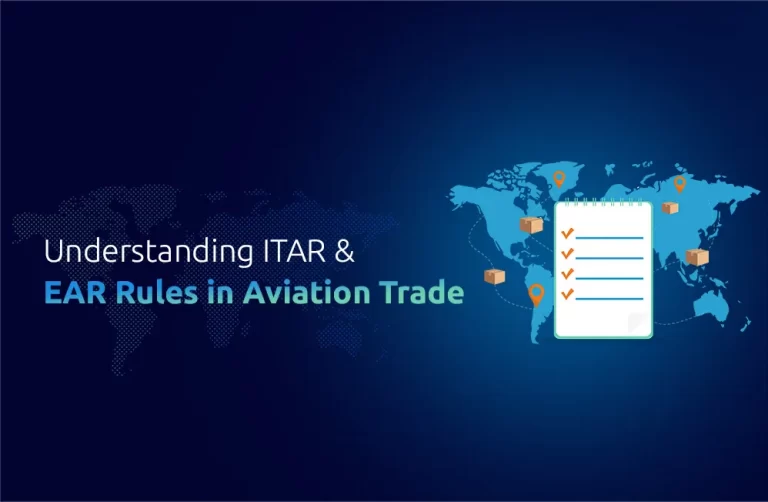Insight
Continued global exports heavily depend on aerospace and defense industry performance, generating substantial economic value for worldwide nations. These sectors combine to be technological leaders and essential infrastructure for international trade development, economic progress, and national security maintenance. The combination of advanced military aircraft and cutting-edge satellite systems supplied by these industries shapes countries’ trade balance and job creation and enhances diplomatic relations. A detailed analysis follows of how these industries influence worldwide export activities and international trading alliances.
A Critical Sector for Global Trade
Aerospace industries and defense operations maintain strong ties to worldwide exports since they manufacture specialized high-value products. Multiple regions buy these products as exports, contributing substantially to national trade revenue. The World Trade Organization reports that aerospace and defense equipment generate hundreds of billions of dollars through annual global trade, so the top exporting nations include the United States, Russia, and Europe. The trade sector stands out because it enables two separate applications. Commercial airplanes, private jets, and drones form civilian applications from aerospace products. Still, military fighter jets, tanks, and radar systems serve as essential elements for national defense. These sectors exist between commercial and defense industries by supplying diverse products to international markets.
Key Export Hubs in Aerospace and Defense
A few specific geographic areas dominate the exports of aerospace products from the defense sector. The United States, the European Union, and Russia were among the three largest global exporting nations. At the same time, the Americans hold the top position. The aerospace exports from the United States to the world reached $150 billion in value in 2020. They amounted to 30% of the total market share.
Airbus serves as one of the world’s biggest commercial aircraft producers & enhances exports across France, Germany, and other EU member states. Russia maintains its reputation as a major exporter of military hardware and space exploration technologies because of its long-standing experience in aviation defense fields. China & India have begun expanding the aerospace sectors by quickly building their aerospace industries in the commercial and defense sectors, which focus heavily on Asian and African markets.
Economic Impact
The aerospace and defense industries maintain vital importance to numerous national economies beyond their role as exporters because they generate jobs and revenue streams. The aerospace and defense sector of the U.S. maintained a 2.5 million workforce while generating $800 billion for the economy in 2020. The majority of industrial revenue derives from defense spending organized through government contracts. The aerospace and defense sectors function as leading drivers to develop local industries across emerging markets. India, Brazil, and Turkey put significant resources into building domestic capabilities for producing commercial aircraft alongside defense planes. The investments create essential infrastructure, high-tech research centers, & industrial capacity improvements, which attract foreign investors to new regions.
Innovation & Technological Advancements
The aerospace and defense sectors use technological advancements as their primary asset, driving their leadership position in exporting internationally. Innovation across supersonic commercial aircraft development and drone technology advancement makes these sectors appealing to global buyers. Commercial space exploration initiatives generate fresh export markets due to their expansion. The private space companies participate in the developing space economy by launching satellites while providing space travel and exploration services.
The emergence of advanced technologies transforms worldwide markets by creating fresh income sources available to former aerospace and defense market leaders. Through their technological advancements, unmanned aerial systems and drones create fundamental changes to defense and commercial aviation operations. The technology that started as a market niche has developed into an essential security monitoring and package distribution component. The export potential of advanced drones is increasing because countries want to upgrade their defense and logistical systems.
Geopolitical Considerations and Export Regulations
Macroeconomic export figures from aerospace and defense industries continue to rise while facing rigorous regulatory high barriers. Military goods require several export control regulations from different nations because these countries want to prevent strategic technology transfer to hostile actors. The U.S. regulates defense product exports through ITAR regulations, which implement restrictions when selling specified products to certain nations. The regulatory framework puts forward two main objectives: safeguarding national security while stopping advanced technology from reaching potential competitors.
Even though regulations exist, international relations depend heavily on the aerospace and defense sectors. Success in international trade between countries occurs when they develop strategic partnerships through shared defense and aerospace technology exchanges. Global alliances between the United States and its NATO allies depend primarily on their practices of military hardware exchange to create stronger partnerships through joint defense programs. The Middle Eastern nations Saudi Arabia and the UAE maintain powerful defense equipment trade relations with U.S. and European partners.
In conclusion
The aerospace and defense sector functions as a cornerstone of worldwide exports because it stimulates economic expansion, technological development, and international business relations. These developing industries will remain influential shapers of international trade patterns to keep powerful nations competitive in the global marketplace. The global industries are vital to One Union Solutions because they facilitate growth and strengthen economic relations worldwide.
Did You Know,
Aerospace and defense exports worldwide reached $250 billion last year, although the United States contributed the most, at above 30%.
FAQs
- What effects do aerospace-defense export operations generate on worldwide trade?
Ans: Aerospace and defense exports activate global trade markets through their capacity to bring substantial revenue to sending nations while establishing international connections through trade pacts and joint ventures.
- To what extent do aerospace and defense products come from specific countries?
Ans: The three prime aerospace defense product exporters are the United States, European Union member states (particularly France and Germany), and Russia.
- Modern aerospace and defense exports progress due to what technological breakthroughs?
Ans: Drone technology, combined with space exploration, unmanned aerial systems, and military aircraft development, stimulates the expanding aerospace and defense market.
- Government regulations create what impact on aerospace and defense export business?
Ans: National security and preventing weapon proliferation control through government-imposed export controls and international arms agreements determines the ability to sell militarily sensitive defense technology.
- Which factors determine how much economic importance aerospace and defense industries create for individual nations?
Ans: The aerospace and defense sectors produce numerous job opportunities and significant export income while also maintaining technology leadership, leading to national economic expansion.












